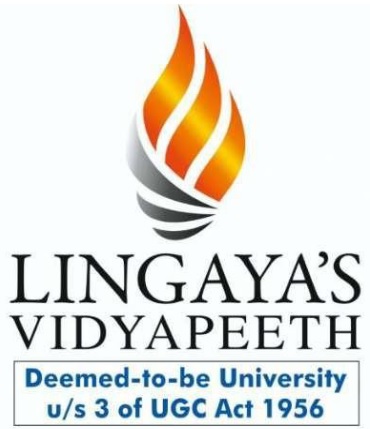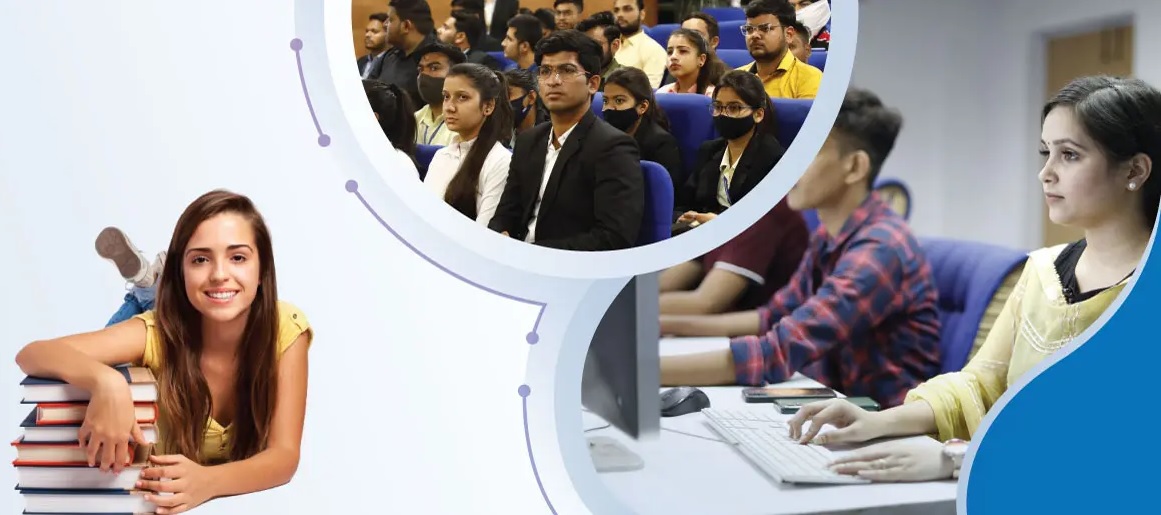Lingaya’s Vidyapeeth Ph.D Admission Entrance Examination 2024 Syllabus : lingayasvidyapeeth.edu.in
Organisation : Lingaya’s Vidyapeeth (Deemed To Be University)
Exam Name : Ph.D Admission Entrance Examination 2024
Announcement : Syllabus
Website : https://www.lingayasvidyapeeth.edu.in/
Ph.D Admission Entrance Examination Syllabus
COMPUTER SCIENCE & ENGINEERING: PAPER-II
1. COMPUTER ARCHITECTURE & ORGANIZATION
Combinational Circuit: adder, subtractor, decoder, MUX etc. Sequential Circuit: Flip-flops, Registers, Counters, Machine Instructions and Addressing Modes, ALU & Data path, Memory interface, I/O Interface, Instruction pipeline, Cache, Main and secondary storage.
Related / Similar Syllabus : TBJEE TJEE Syllabus Tripura Joint Entrance Examination

2. COMPUTER NETWORKS
ISO/OSI stack, LAN technologies, Flow and error control techniques, IPV4, IPV6, TCP/UDP, Routing algorithms, Congestion control, Application layer protocols, Basic concepts of Switches, Bridges, Gateway & Routers, Basic concepts of Network security: Public and private key cryptography, Firewall, Digital signature etc.
3. OPERATING SYSTEM
Process, Thread, Inter process Communication, CPU Scheduling, Concurrency control, synchronization, Deadlock, Memory management and Virtual Memory, File system, I/O System Protection and Security.
4. DATA STRUCTURES
Overview of Programming in C/C++, Recursion, Parameter Passing, Scope, Binding, Array , Stacks, Queues, Link list, Searching & Sorting Techniques ,Lists and their Applications, Trees: Binary Tree, Properties & Representation, ADT Binary Tree, Binary search Trees, AVL Trees & Applications, Graphs: Representations & Properties, Directed and Undirected graphs, Graph search methods, Path finding Algorithms, Asymptotic notations ,Greedy, Dynamic Approach, Branch and Bound techniques.
5. THEORY OF COMPUTATION AND COMPILER DESIGN
Regular Language and Finite Automata, Context free Grammar, Context sensitive Grammar, push down automata, Turing Machine, Undecidabilty, Lexical Analyzer, Parsing Syntax, Direct translation, Runtime environment, Immediate and Target code generation, Code optimization.
6. DATABASE MANAGEMENT SYSTEM
Basic concept, ER model, Relationship Model, Relational algebra, Tuple Calculus, Data Base design, Integrity constraint, Normal Forms, Query languages (SQL), File structure, Concurrency Control and Transactions.
7. SOFTWARE ENGINEERING AND WEB DEVELOPMENT
Information gathering, requirement and feasibility analysis, data flow diagrams, process specifications, input/output design, process life cycle, planning and managing the project, design, coding testing, implementation, maintenance. HTML, XML, Scripting and Basic Concept of Client and server side programming.
8. PROBABILITY THEORY AND DISCRETE MATHEMATICS
Conditional Probability, Mean, Median, Mode and Standard Deviation, Exponential, Sets, Relations, Functions, Group, Partial Order, Boolean algebra, Propositional and Predicate Logic.
9. ADVANCE COMPUTING
Artificial intelligence, Heuristic and blind search, Knowledge base system, Fuzzy logic, fuzzy membership function, Neural network, ANN, Learning rules. Single layer and multilayer neural network, Back Propagation network, Genetic algorithm, Fundamentals, basic concepts, working principle, encoding and fitness function.
MECHANICAL ENGINEERING: PAPER-II
(A) APPLIED MECHANICS AND DESIGN
1. ENGINEERING MECHANICS
Free body diagrams and equilibrium; kinematics and dynamics of particles and of rigid bodies in plane motion
2. MECHANICS OF SOLIDS
Stress and strain, force and bending moment diagrams; bending and shear stresses; deflection of beams; torsion of circular shafts; springs; thin walled sections; Euler’s theory of columns; strain energy methods; thermal stresses; mechanical properties; material testing.
3. VIBRATIONS
Free and forced vibration of single degree of freedom systems; effect of damping; vibration isolation; resonance; critical speeds of shafts.
4. DESIGN
Design for static and dynamic loading; failure theories; principles of the design of machine elements such as shafts, spur gears, rolling and sliding contact bearings, brakes, clutches and various joints.
(B) PRODUCTION ENGINEERING
Unconventional Machining Processes,Computer controlled machines, CAD/CAM, CNC, Mechanics of Metal Cutting, Tool wear and Machinability, Economics of Metal cutting, Metal Forming, Casting Processes, Powder Metallurgy, Joining Processes, Finishing operations and super finishing processes, Measurement.
(C) THERMAL ENGINEERING
1. THERMODYNAMICS
Basic Laws of Thermodynamics, Availability, Irreversibility, Concept of Exergy, Thermodynamic cycles related to energy conversion.
2. I.C. ENGINES
Air Standard cycles, Normal and Abnormal Combustion in S.I. engines and C.I. Engines., Engine performance, Alternative Fuels for I.C. Engines.
3. FLUID MECHANICS AND MACHINES
Fluid properties, Bernoulli’sequation, low through pipes, Hydraulic machines.
Research Methodology Paper-I Syllabus
Common To All Candidates
1. RESEARCH METHODOLOGY: AN INTRODUCTION
Meaning of Research, Objectives of Research, Motivation in Research, Types of Research, Research Approaches, Significance of Research, Research Methods Versus Methodology, Research and Scientific Method, Importance of Knowing How Research is Done, Research Process, Criteria of Good Research, Problems Encountered by Researchers in India
2. DEFINING THE RESEARCH PROBLEM
What is a Research Problem? Selecting The Problem, Necessity of Defining the Problem, Technique Involved in Defining a Problem
3. RESEARCH DESIGN
Meaning of Research Design, Need for Research Design, Features of a Good Design, Important Concepts Relating to Research Design, Different Research Designs, Basic Principles of Experimental Designs
4. PUBLICATIONS, PLAGIARISM, INTELLECTUAL PROPERTY RIGHTS
Quality of research work and papers –indexing, impact factor, H Index, citation index Meaning and principles of plagiarism, methods of plagiarism check, plagiarism checking software, Principles of intellectual property rights, patents, copyrights, trademarks and their importance.
5. INTERPRETATION AND REPORT WRITING
Meaning of Interpretation, Why Interpretation? Technique of Interpretation, Precautions in Interpretation, Significance of Report Writing, Different Steps in Writing Report, Layout of the Research Report, Types of Reports, Oral Presentation, Mechanics of Writing a Research Report, Precautions for Writing Research Reports

Download Ph.D Entrance Exam Syllabus
Ph.D Entrance Exam 2024 : https://www.syllabus.gen.in/uploads/pdf2024/3301-phd.pdf
REFERENCE BOOK:
Research Methodology-Methods and Techniques, Kothari CR, New Age International, 2nd ed. / 2004.